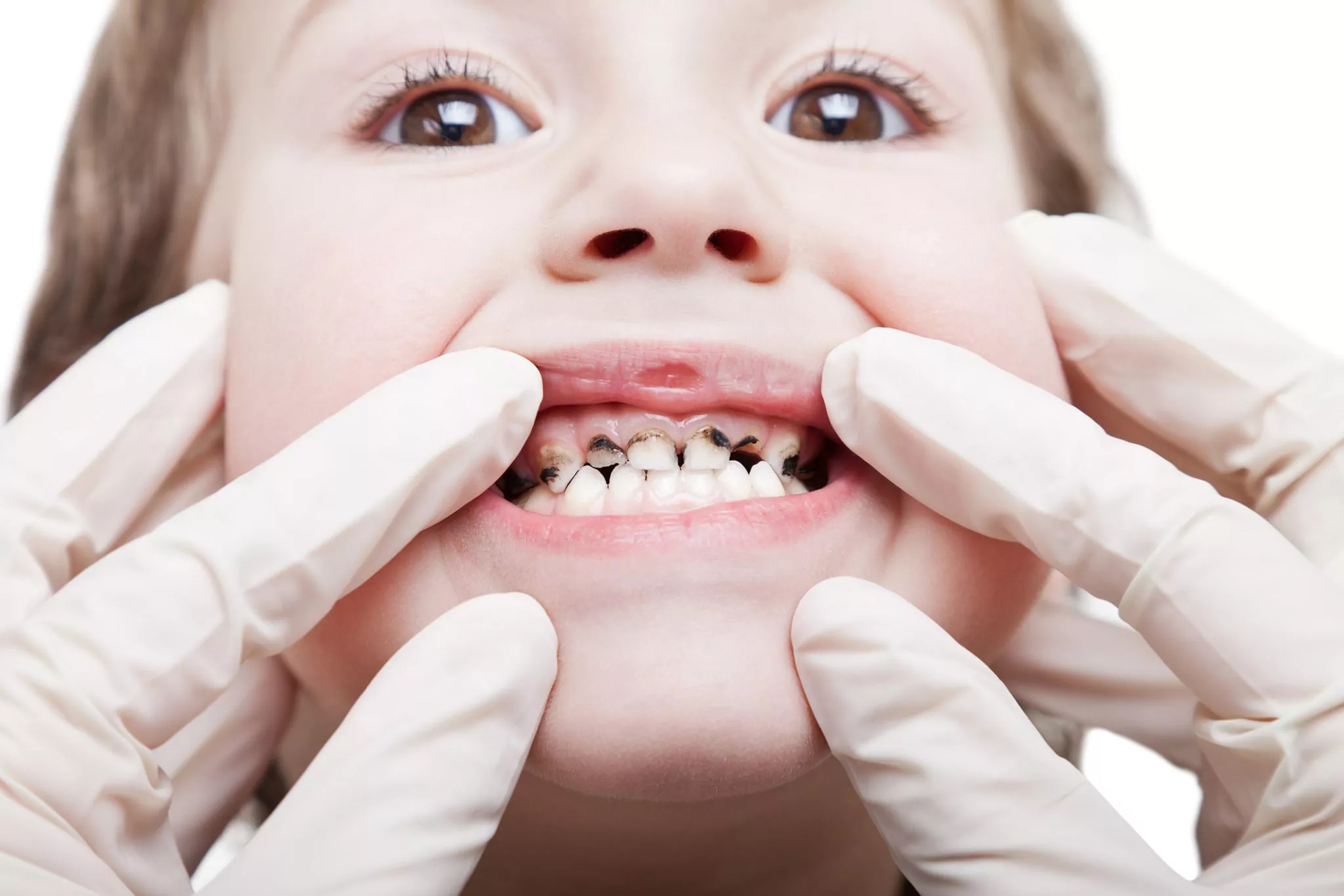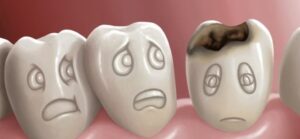
In this article, we’re going to focus on the primary causes of tooth decay, though it really comes down to avoiding one thing: Sugar. Aside from copious amounts of ingested glucose, tooth decay is also expedited by the interaction of bacteria and time, the prolonged exposure to acids from bacteria gradually weakening and damaging tooth enamel.
Some other factors include:
- Dry mouth
- Starchy foods
- Genetics
- Saliva
- Acidic foods and beverages
- Poor oral hygiene
In a proverbial nutshell, consuming sugary foods and beverages, coupled with heavy snacking and neglecting oral care, contribute to the main causes of cavities. Cavities, by definition, are areas in the hard surface of the teeth that become damaged over time, and these areas of tooth decay ultimately transform into holes or tiny openings that can lead to tooth loss, infection, and serious toothaches.
Tooth decay isn’t relegated to one age group, either; people of all ages can experience tooth decay, and this runs the gamut from childhood to senior years. Once a human being boasts teeth, he or she can succumb to the phenomenon.
About varying ages, young children tend to be at risk for “early childhood carries,” also referred to as “baby bottle tooth decay.” What this refers to is a severe type of decay that starts in the baby’s front teeth and extends to the back. When it comes to older adults, decay can be experienced on the exposed root surfaces of the teeth due to receding gums.
This enables decay-causing bacteria in the mouth to come in contact with the root of the tooth.
When a tooth is repeatedly exposed to the aforementioned acid from bacteria – such as when copious amounts of sugary and starchy foods and drinks are frequently consumed – the enamel continues to lose minerals. When this occurs, a white spot may appear in the area where these minerals were lost, indicating an early sign of decay.
However, tooth decay can be reversed or even potentially stopped at this stage, as enamel can repair itself via minerals contained in saliva and fluoride from toothpastes, or through a dental hygienist’s application of fluoride. It’s when more minerals are lost that can not be restored and cavities eventually form.
So what are the symptoms of tooth decay? In the early stages, it is common for no symptoms to rear their heads. As the problem advances, toothaches (tooth pain) or sensitivity to hot, cold, or sweets can occur, and if the tooth succumbs to infection, several problems can pop up, notably abscesses (or pus pockets).
As a result, symptoms such as fever, facial swelling, and pain are usually what follows.
During a routine dental checkup, tooth decay is something that should be spotted, as the hygienist or dentist will come across white, brown or black staining on the tooth. More advanced forms of decay are marked by holes (cavities), and the dentist can also check for sticky or soft areas in addition to taking X-rays.
Some helpful tips to prevent tooth decay include:
- Use fluoride via a fluoride-rich toothpaste, drinking tap water with fluoride or a fluoride mouth rinse
- Keep to a good oral hygiene routine
- Make smart food choices limiting foods high in sugars and starches
- Do not use tobacco products
- See a dentist for professional cleanings and regular checkups
Call and talk to a professional at Navdeep Dental Clinic today to learn more about tooth decay and how to prevent it.



